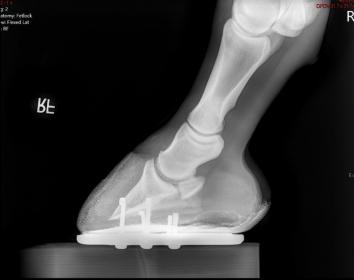I have a 5 y/o OTTB who just went very lame in his front right- a few months after a questionable hoof trim that we have been trying to correct. The vet came out to do radiographs and these were some of her notes:
“there is mild coffin joint arthritis. There is mild lipping of the extensor process of the coffin bone.”
I am very concerned as he is only 5 and I have been using him to jump up to 3 ft (hoping to go higher soon). The vet will be out later this week to inject the joints and we will be looking into wedges but I am trying to be realistic. Is there any kind of a good prognosis for this type of injury? Or any supplements etc that could help to slow it down?
I’ve attached the radiograph for reference

